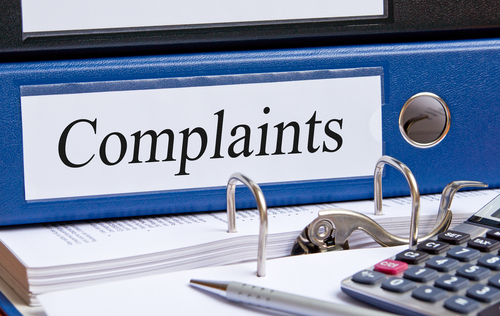Blog
BLOG: How to complain – and win

1. Know your rights
Before you do anything else, check the contract you have with the company, and the terms and conditions. If you are complaining about a faulty item then have the Sale of Goods Act in your back pocket. If it’s an energy company, check Ofgem’s Standard of Conduct. You will then know where you stand, and what you can reasonably expect.
2. Make a call to the customer services department
You need to explain your problem calmly and politely, and outline what you expect the organisation to do about it. Make a formal note of everything said during this conversation – and consider recording it.
3. Gather evidence
If you are fobbed off, you need to gather evidence about where their product or service has fallen short. This may include receipts, emails, messages, photographs, video evidence, and in the case of shoddy goods, possibly quotes for repair.
4. Do your research into the customer services practices of the firm in question
Check online to see if anyone else has reported a similar problem, and what the company did about it for them. That should give you an idea of the kind of response you are likely to get – and the remedy you should request.
5. Put your complaint in writing
Enclose copies of your evidence, with a clear explanation of your problem, what rights you are calling on, and what needs to be done to put things right. Give them a timescale in order to respond.
6. Make a fuss
If you still draw a blank, the conventional approach was to threaten to go to the press and take your complaint to a wider audience. The trouble was that there was no guarantee that your cause would be taken up, so the company could see it as an empty threat. Now you can explain to the company that if you do not receive a response through conventional channels, you will take the complaint to a wider audience through social media.
7. Follow through
The internet and social media have given everyone power over businesses, so we can put them under pressure to do the right thing. Companies worry about their reputation as much as customer service, so if you use social media to air your complaint, you are far more likely to get a response.
I’m part of the team behind recently launched A Spokesman Said, which helps you put a complaint together, put it out on social media, and get it seen. You could use this approach, or just go direct and tweet your complaint using the company hashtag, or post to its Facebook page.
8. Be prepared to push
Social media is proving a highly effective way to garner a response. However, you need to be aware of the quirks of this approach too. Companies have invested in their social media teams, but their job is to protect the company rather than solve problems. We see people who post about a problem on social media and they get a response from the PR company that handles the social media apologising and giving them a number to call where they assure their problem will be dealt with. As far as they are concerned their reputation is protected. However, the number is just for customer services, so the customer is back to square one.
It’s just as important to be tenacious when using social media. On my site when someone posts a complaint, they start the clock, if the company doesn’t respond and resolve the problem quickly, it will impact their customer satisfaction score, so that over time if the company falls short, their reputation will take a battering. From your perspective this isn’t going to solve your problem, but will help protect others from the experience your suffering through at the moment.
9. Give them one last chance
If social media fails, you’re back to the traditional approach. You need to make contact with the company one final time, outlining the problem, your evidence, and a deadline. Explain that if they do not respond satisfactorily you will go to the small claims court. Often this is enough to persuade them to find a way to solve your problem.
10. Follow through
When all else fails, you may have no alternative than follow through on this threat. This doesn’t have to be as scary a prospect as it first seems, as the process is designed not to need lawyers or expert witnesses. However, there’s no denying that it can be time-consuming, so it’s worth exhausting all possible alternatives first.